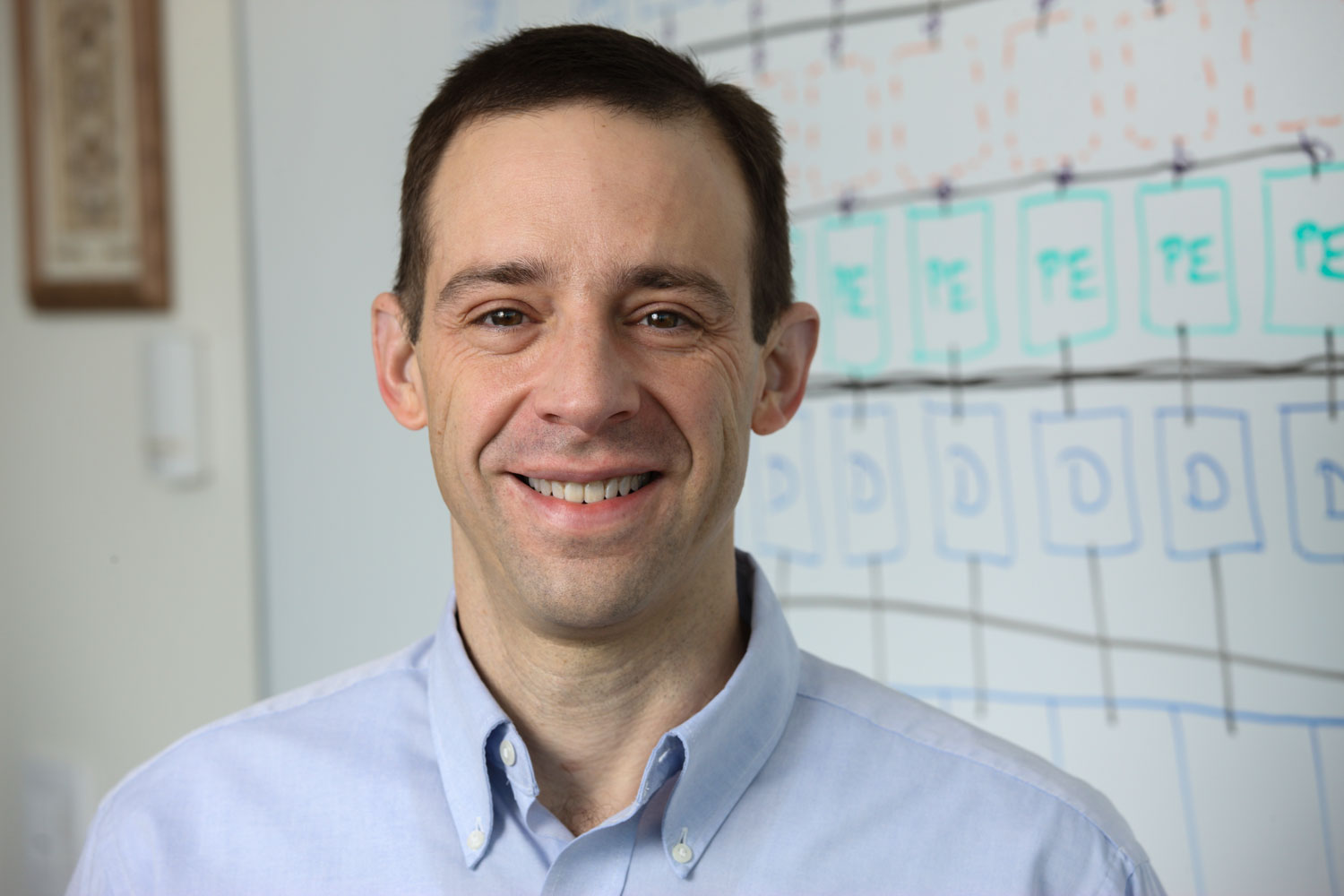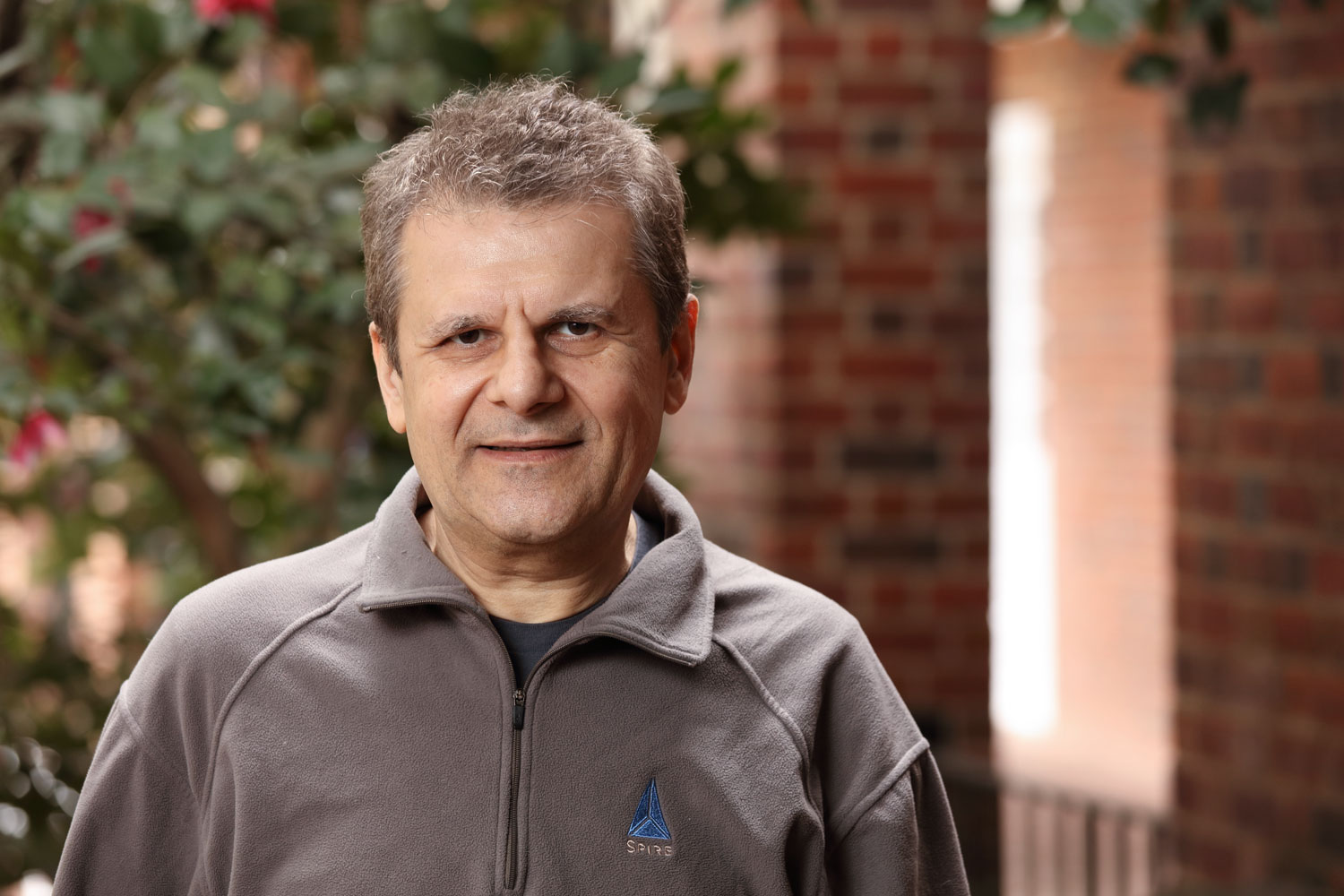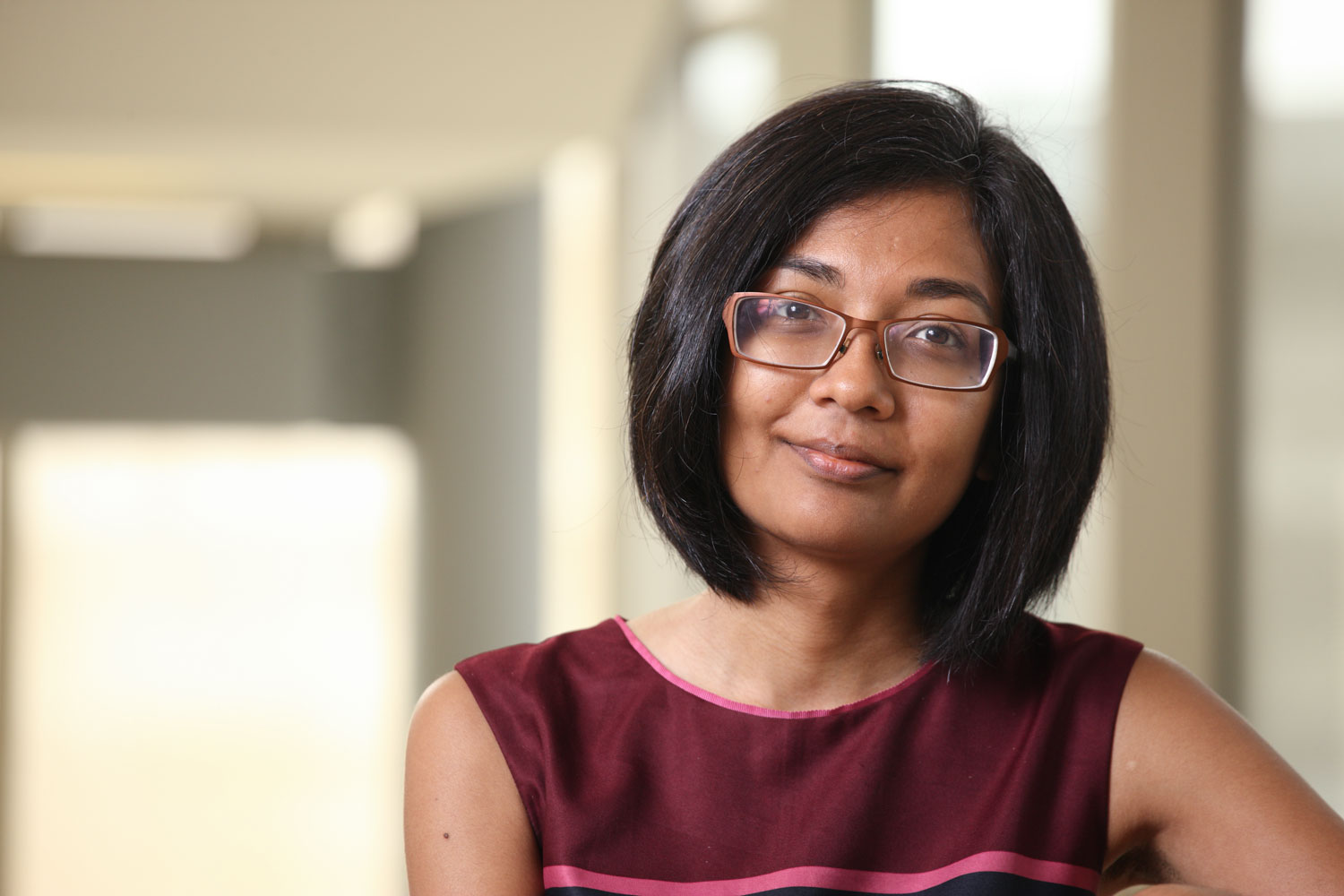The University of Virginia School of Engineering and Applied Science has been selected to establish a $27.5 million national center to remove a bottleneck built into computer systems 70 years ago that is increasingly hindering technological advances today.
The school’s new Center for Research in Intelligent Storage and Processing in Memory, or CRISP, will bring together researchers from eight universities to remove the separation between memories that store data and processors that operate on the data.
That separation has been part of all mainstream computing architectures since 1945, when John von Neumann, one of the pioneering computer scientists, first outlined how programmable computers should be structured. Over the years, processor speeds have improved much faster than memory and storage speeds, and also much faster than the speed at which wires can carry data back and forth.
These trends lead to what computer scientists call the “memory wall,” in which data access becomes a major performance bottleneck. The need for a solution is urgent, because of today’s rapidly growing data sets and the potential to use big data more effectively to find answers to complex societal challenges.
“Certain computations are just not feasible right now, due to the huge amounts of data and the memory wall,” said Kevin Skadron, who chairs UVA Engineering’s Department of Computer Science and leads the new UVA center. “One example is in medicine, where we can imagine mining massive data sets to look for new indicators of cancer. The scale of computation needed to make advances for health care and many other human endeavors, such as smart cities, autonomous transportation and new astronomical discoveries, is not possible today. Our center will try to solve this problem by breaking down the memory-wall bottleneck and finally moving beyond the 70-year-old paradigm. This will enable entirely new computational capabilities, while also improving energy efficiency in everything from mobile devices to datacenters.”

Kevin Skadron, who chairs the Department of Computer Science, will lead the new national Center for Research in Intelligent Storage and Processing in Memory. (Photo by Tom Cogill)
CRISP is part of a $200 million, five-year national program that will fund centers led by six top research universities: UVA, University of California at Santa Barbara, Carnegie Mellon University, Purdue University, the University of Michigan and the University of Notre Dame. The Joint University Microelectronics Program is managed by North Carolina-based Semiconductor Research Corporation, a consortium that includes engineers and scientists from technology companies, universities and government agencies.
Each research center will examine a different challenge in advancing microelectronics, a field that is crucial to the U.S. economy and its national defense capabilities. The centers will collaborate to develop solutions that work together effectively. Each center will have liaisons from the program’s member companies, collaborating on the research and supporting technology transfer.
“The trifecta of academia, industry and government is a great model that benefits the country as a whole,” Skadron said. “Close collaboration with industry and government agencies can help identify interesting and relevant problems that university researchers can help solve, and this close collaboration also helps accelerate the impact of the research.”
The program funds positions for about a dozen new Ph.D. students at UVA Engineering, and altogether, about 100 Ph.D. students across the entire center. The center will also create numerous opportunities for undergraduate students to get involved in research. The program provides all these students with professional development opportunities and internships with companies that are program sponsors.
Engineering Dean Craig Benson said the new center expresses UVA Engineering’s commitment to research and education that add value to society.
“Most of the grand challenges the National Academy of Engineering has identified for humanity in the 21st century will require effective use of big data,” Benson said. “This investment affirms the national research community’s confidence that UVA has the vision and expertise to lead a new era for technology.”
Pamela Norris, UVA Engineering’s executive associate dean for research, said the center is also an example of the bold ideas that propelled the school to a near 36 percent increase in research funding in fiscal year 2017, compared to the prior year.
“UVA Engineering has a culture of collaborative, interdisciplinary research programs,” Norris said. “Our researchers are determined to use this experience to address some of society’s most complex challenges.”
UVA’s center will include researchers from seven other universities, working together in a holistic approach to solve the data bottleneck in current computer architecture.
“Solving these challenges and enabling the next generation of data-intensive applications requires computing to be embedded in and around the data, creating ‘intelligent’ memory and storage architectures that do as much of the computing as possible as close to the bits as possible,” Skadron said.

Mircea Stan will lead CRISP’s research on 3-D chip architecture, thermal and power optimization, and circuit design. (Photo by Tom Cogill)
This starts at the chip level, where computer processing capabilities will be built inside the memory storage. Processors will also be paired with memory chips in 3-D stacks. UVA electrical and computer engineering professor Mircea Stan, an expert on the design of high-performance, low-power chips and circuits, will help lead the center’s research on 3-D chip architecture, thermal and power optimization, and circuit design.
CRISP researchers also will examine how other aspects of computer systems will have to change when computer architecture is reinvented, from operating systems to software applications to data centers that house entire computer system stacks. UVA computer science assistant professor Samira Khan, an expert in computer architecture and its implications for software systems, will help guide the center’s efforts to rethink how the many layers of hardware and software in current computer systems work together.
CRISP also will develop new system software and programming frameworks so computer users can accomplish their tasks without having to manage complex hardware details, and so that software is portable across diverse computer architectures.

UVA’s Samira Khan will help guide the center’s efforts to rethink how layers of hardware and software in current computer systems work together. (UVA Engineering photo)
All this work will be developed in the context of several case studies to help guide the hardware and software research to practical solutions and real-world impact. These include searching for new cancer markers; mining the human gut microbiome for new insights on interactions among genetics, environment, lifestyle and wellness; and data mining for improving home health care.
“Achieving a vision like this requires a large team with diverse expertise across the entire spectrum of computer science and engineering, and such a large-scale initiative is very hard to put together without this kind of investment,” Skadron said. “These large, center-scale programs profoundly enhance the nation’s ability to maintain technological leadership while simultaneously training a large cohort of students who will help address the nation’s rapidly growing need for technology leadership. This is an incredibly exciting opportunity for us.”
Media Contact
Article Information
January 12, 2018
/content/uva-engineering-tapped-lead-275-million-effort-reinvent-computing

